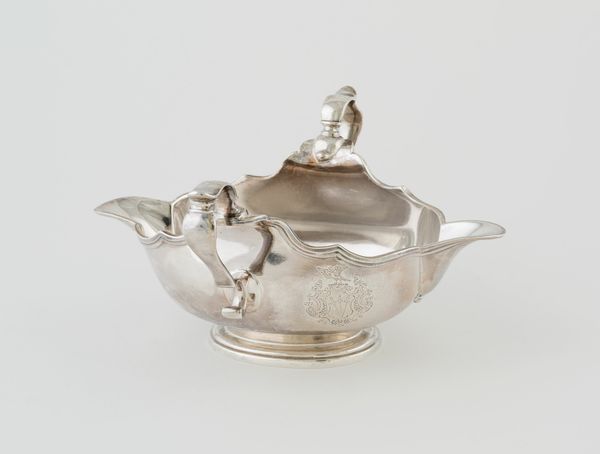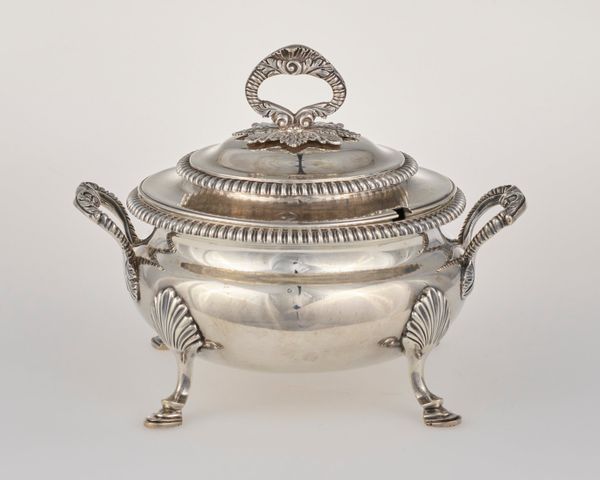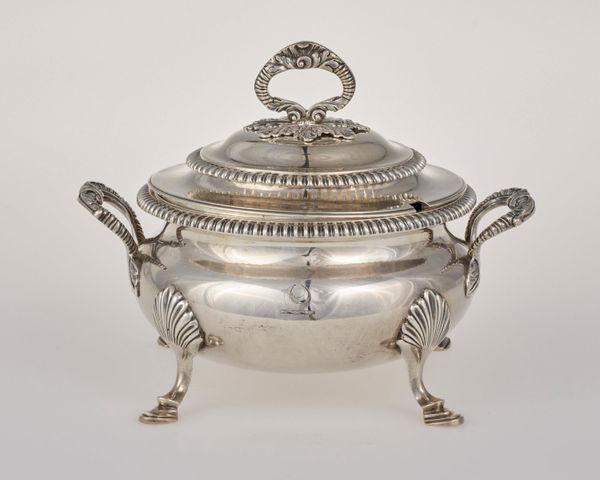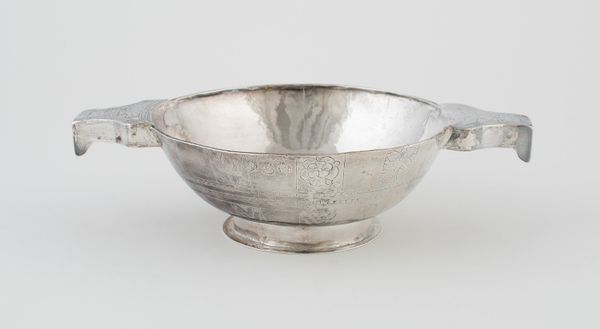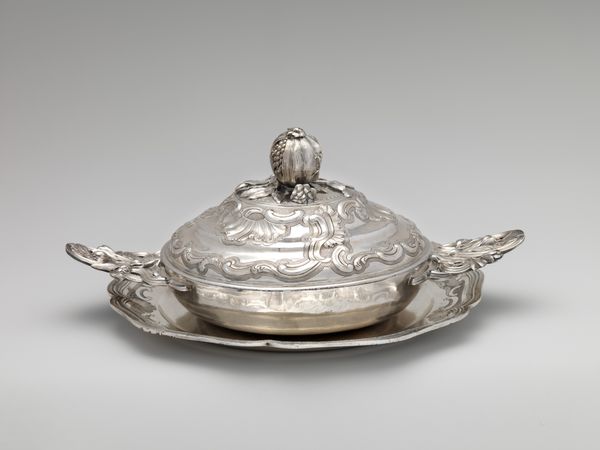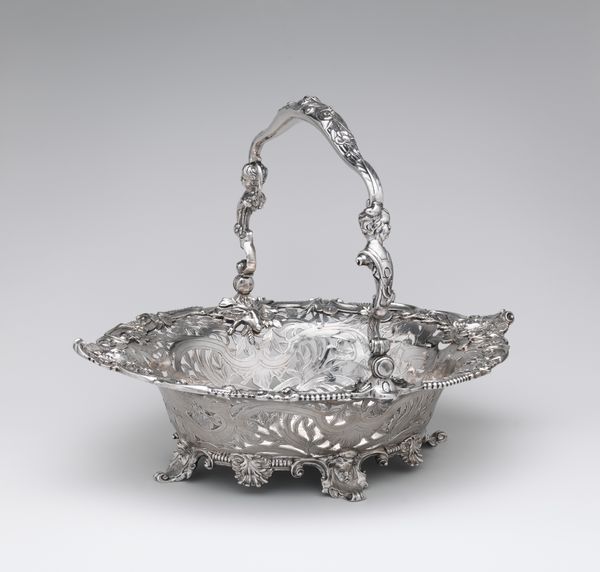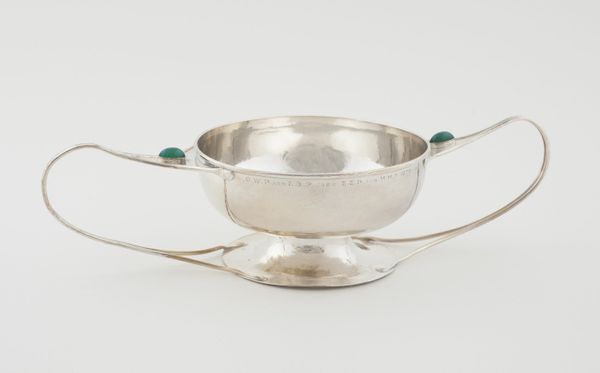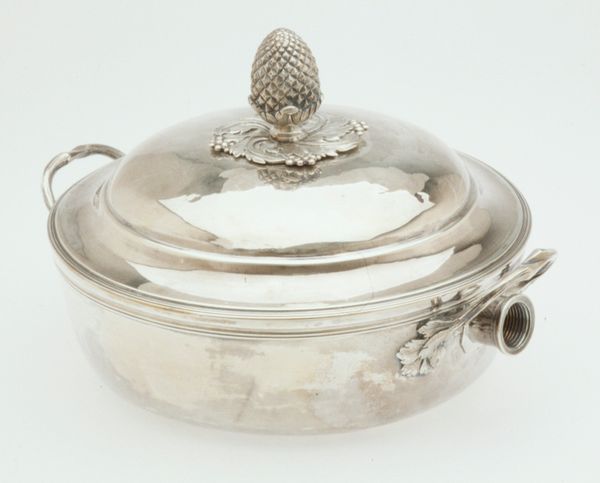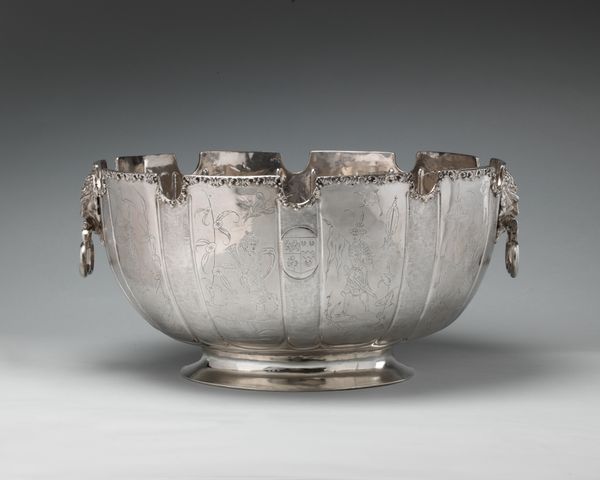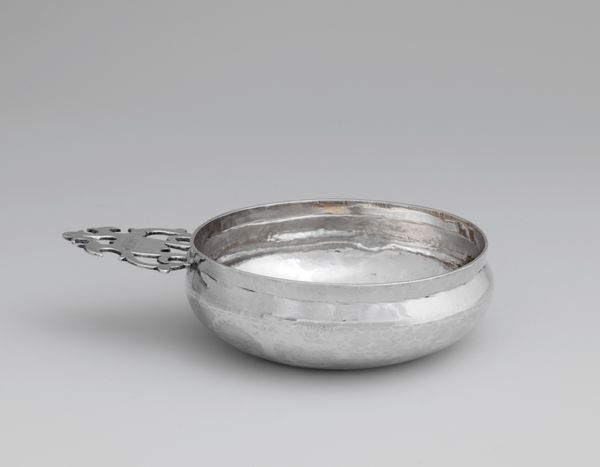
Covered Bowl (Écuelle) with Representations of French Rivers 1878 - 1892
0:00
0:00
Dimensions: 14 × 30.5 × 17.8 cm (5 1/2 × 12 × 7 in.)
Copyright: Public Domain
Jules-Paul Brateau crafted this Covered Bowl, or Écuelle, from silver sometime between the late 19th and early 20th centuries. As a silversmith, Brateau navigated the expectations of French artistic tradition with the changing tastes of the time. This piece, adorned with figures representing French rivers, speaks to the cultural identity and pride prevalent during the Belle Époque. But while appearing to celebrate French patrimony, it also subtly underscores the colonial underpinnings of the era, given France's dependence on its colonies. It represents the importance of water as a life-giving resource but also as a symbol of power and control. The silver material elevates a functional object to the realm of high art, reflecting the social stratification of the period and the luxury enjoyed by the elite. Consider how the Écuelle’s intricate details invite us to reflect on the complex relationship between art, national identity, and the socio-political context of its creation.
Comments
No comments
Be the first to comment and join the conversation on the ultimate creative platform.
